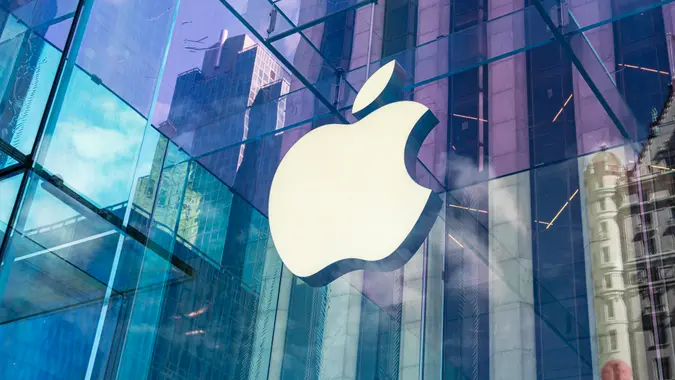If You Invested $1,000 in Apple When the iPhone Debuted, You’d Have This Much Today

Commitment to Our Readers
GOBankingRates' editorial team is committed to bringing you unbiased reviews and information. We use data-driven methodologies to evaluate financial products and services - our reviews and ratings are not influenced by advertisers. You can read more about our editorial guidelines and our products and services review methodology.

20 Years
Helping You Live Richer

Reviewed
by Experts

Trusted by
Millions of Readers
There are some decisions in life that make you wish you had a crystal ball. If only you could have glanced into it at some key moment, maybe you would have made a better choice, whether to avert tragedy, seize opportunity, or simply make a tidy sum of money.
If you could have peered in that crystal ball in 2007, when Apple released its first iPhone, you might have made a life-changing financial move: investing $1,000 in Apple stock.
The iPhone is undeniably one of the most formative technological innovations of the modern era. It has radically reshaped the way we live, work, and communicate while securing Apple’s place as one of the most important and lucrative companies on the planet — and creating significant wealth for its shareholders.
So, if you’d had a crystal ball in 2007 and invested $1,000 in Apple stock, what would you have to show for it now?
What Would a Share Have Cost You?
When the iPhone made its debut in 2007, a share of Apple stock cost approximately $12, adjusting for splits. With $1,000 to invest, you could have purchased 83 shares at this price.
For comparison, Apple’s stock price as of January 2025 hovers around $228 per share — a dramatic increase, even after accounting for stock splits. Adjusting for inflation, that $12 in 2007 would be equivalent to about $18.24 in 2024 dollars.
Adjusting for Stock Splits
Since the iPhone first dazzled consumers, Apple has undergone several stock splits, which complicates the math slightly. Stock splits increase the number of shares an investor owns while reducing the price per share proportionally, maintaining the total value of the investment.
Here’s how the timeline of your stock history would have played out:
- In 2007, you purchased 83 shares at $12 each.
- In 2014, Apple conducted a 7-for-1 stock split, meaning your 83 shares became 581 shares.
- In 2020, Apple underwent a 4-to-1 stock split. Your 581 shares were multiplied by four, leaving you with 2,324 shares.
The Grand Total
After learning the grand total, you’ll probably wish for a time machine in addition to that crystal ball. If you’d dropped $1,000 on Apple stock while waiting in line for your first iPhone, as of January 2025, with Apple stock trading around $228 per share, your 2,324 shares would now be worth $529,872.
That’s a stunning return on a $1,000 investment — over 500 times your original amount. You may not have a crystal ball or a time machine, but this example underscores the power of long-term investing in innovation. Still, nothing’s stopping you from taking that quantum physics class to build yourself a time machine.
More From GOBankingRates
 Written by
Written by  Edited by
Edited by 
























